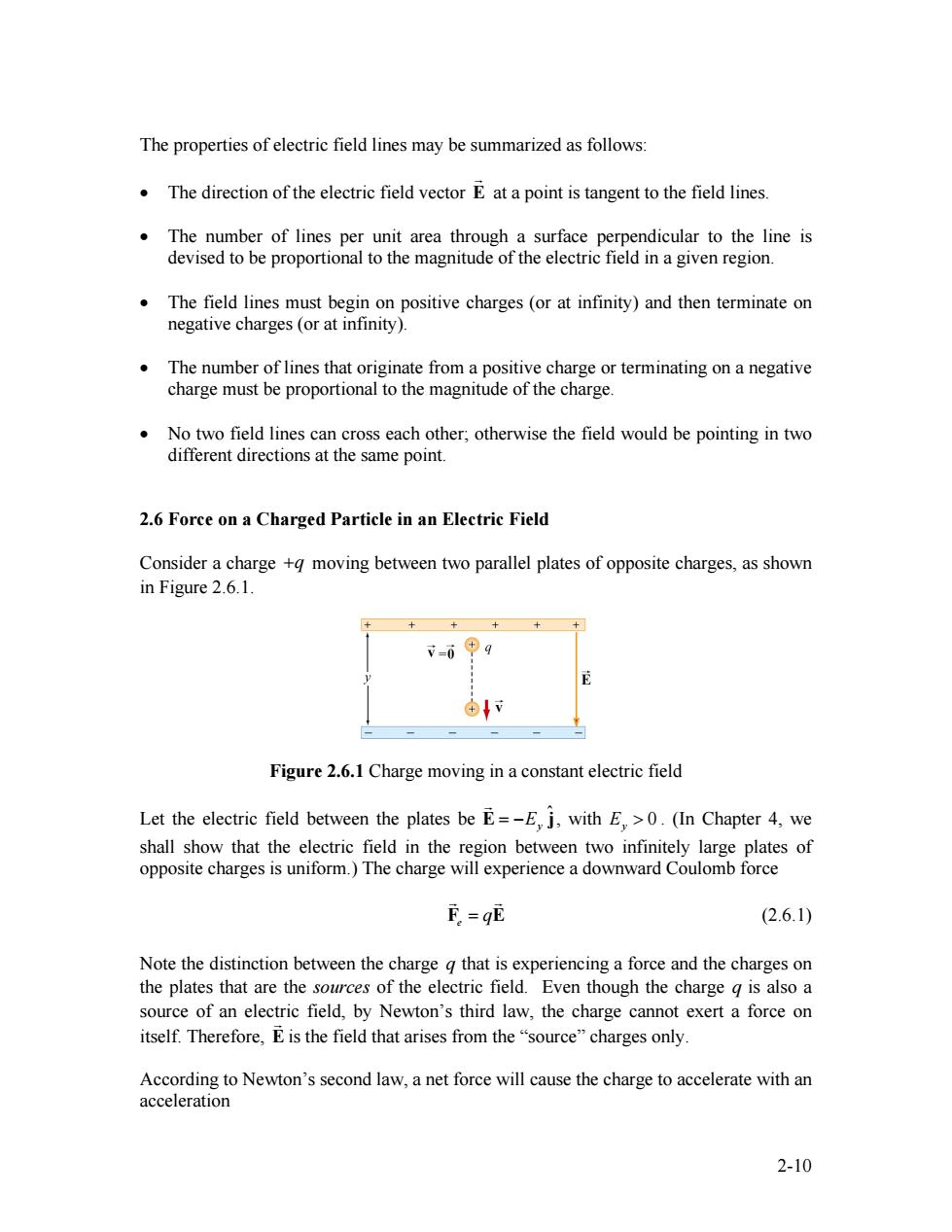正在加载图片...

The properties of electric field lines may be summarized as follows: The direction of the electric field vector E at a point is tangent to the field lines. The number of lines per unit area through a surface perpendicular to the line is devised to be proportional to the magnitude of the electric field in a given region. The field lines must begin on positive charges(or at infinity)and then terminate on negative charges (or at infinity). The number of lines that originate from a positive charge or terminating on a negative charge must be proportional to the magnitude of the charge. No two field lines can cross each other;otherwise the field would be pointing in two different directions at the same point. 2.6 Force on a Charged Particle in an Electric Field Consider a charge +q moving between two parallel plates of opposite charges,as shown in Figure 2.6.1. v=0 ⊕g Figure 2.6.1 Charge moving in a constant electric field Let the electric field between the plates be E=-E j,with E0.(In Chapter 4,we shall show that the electric field in the region between two infinitely large plates of opposite charges is uniform.)The charge will experience a downward Coulomb force F=gE (2.6.1) Note the distinction between the charge q that is experiencing a force and the charges on the plates that are the sources of the electric field.Even though the charge g is also a source of an electric field,by Newton's third law,the charge cannot exert a force on itself.Therefore,E is the field that arises from the"source"charges only. According to Newton's second law,a net force will cause the charge to accelerate with an acceleration 2-10The properties of electric field lines may be summarized as follows: • The direction of the electric field vector E G at a point is tangent to the field lines. • The number of lines per unit area through a surface perpendicular to the line is devised to be proportional to the magnitude of the electric field in a given region. • The field lines must begin on positive charges (or at infinity) and then terminate on negative charges (or at infinity). • The number of lines that originate from a positive charge or terminating on a negative charge must be proportional to the magnitude of the charge. • No two field lines can cross each other; otherwise the field would be pointing in two different directions at the same point. 2.6 Force on a Charged Particle in an Electric Field Consider a charge moving between two parallel plates of opposite charges, as shown in Figure 2.6.1. +q Figure 2.6.1 Charge moving in a constant electric field Let the electric field between the plates be ˆ E = −E y j G , with . (In Chapter 4, we shall show that the electric field in the region between two infinitely large plates of opposite charges is uniform.) The charge will experience a downward Coulomb force 0 E y > e F = qE G G (2.6.1) Note the distinction between the charge that is experiencing a force and the charges on the plates that are the sources of the electric field. Even though the charge is also a source of an electric field, by Newton’s third law, the charge cannot exert a force on itself. Therefore, E G is the field that arises from the “source” charges only. q q According to Newton’s second law, a net force will cause the charge to accelerate with an acceleration 2-10